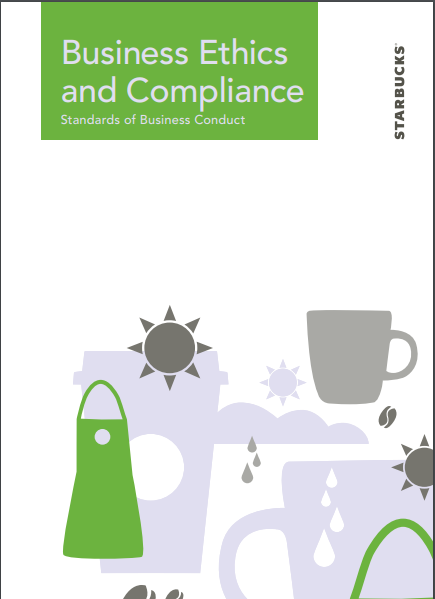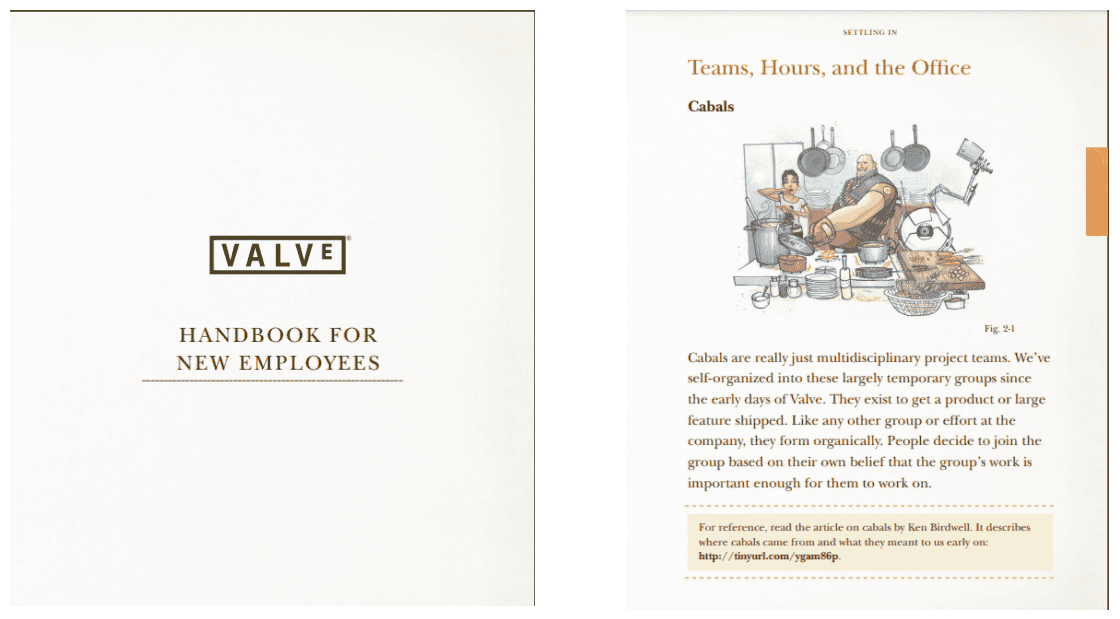
A well-written, information-rich employee handbook is a valuable business asset.
It spells out the rules of the game and conveys your vibes and values clearly. In short, it helps you achieve your ultimate goal – employee happiness.
The question is, how do you ensure that your employee handbook is of real help to your workforce?
The devil lies in the details!
The success of your employee handbook hinges on the content you include in it and the way you word it.
This blog explains how a perfect employee handbook looks like and what to include in an employee handbook.
Let’s get started –
How Does a Perfect Employee Handbook Look Like?
A perfect employee handbook does one thing extremely well – providing valuable information to your employees. It’s always updated with the latest information and guides employees on the right path every time they face challenges at work.
An employee handbook explains your company’s code of conduct, business policies, and expectations from employees working in different departments and at various levels.
It also outlines your company’s vision, mission, values, vibes, and culture. Your employees get a clear picture of the ins and outs of your organization, which helps them blend with the work environment and give their cent percent to work.
Employee Handbook Content – Sections You Must Include
Having an employee handbook is one thing and having a handbook that is truly a helping hand for your workforce is another.
Employees have high hopes from your handbook. They consider it as a one-stop solution to most of their work-related challenges. If your handbook fails to guide them, it will result in negative brand perception. This can be the case with new employees, who have little to no idea of your organization’s work dynamics.
To avoid that, it’s crucial to be mindful of the content you include in your employee manual. Thinking of what to include in an employee handbook? Here are some of the most significant sections that you must add to make the handbook useful for your workforce.
Read More: How to Create an Excellent Employee Handbook for Your Workforce
1. Code of Conduct
This section provides complete information about the values of your organization and sets certain boundaries, which employees are not expected to cross. It outlines the commandments of being a part of your organization.
This section serves as a reference point for employees whenever they face a dilemma around what’s right and what’s wrong. It can include details about the dress code, working hours, and monthly leaves. Besides, you can also add information around health and safety rules, attendance and punctuality rules, discrimination and harassment policies, and much more.
Code of conduct is different for every organization. Create this section based on the industry you are into and the values you follow.

For instance, Starbucks has comprehensive documentation on its code of conduct. This document covers everything from its mission and vision to the workplace environment and business practices.
Read More: Turn Employee Training Effortless With Training Documentation
2. Equal Employment & Non-Discrimination Policy
According to the U.S. Department of Labor, various organizations are required to have equal employment and non-discrimination policy.
This law covers various types of discrimination from pay, race, and religion to national origin and disability. Ensure that you add all necessary information about this policy in the employee handbook.
Your employees must know that you are strictly against discrimination and inequality of any kind at the workplace. Clearly convey that such acts will not be tolerated in the workplace as it can create a negative and toxic environment, which is harmful for the entire organization.
3. Employee Benefits
This section lists down the employee benefits offered by your company. These benefits are a reflection of your brand values, so ensure that you don’t miss out on any of them.
Mention the eligibility criteria and the time or events when employee benefits can be availed. The benefits can be around healthcare, reimbursements, travel allowance, referral bonuses, and compensation.
You will also want to add the benefits provided when employees complete five years or more successfully in your organization. For instance, you can have a benefits package where top-performing employees working for over five years are taken on a 10-day company-sponsored vacation.
Isn’t that great?
If your company provides such substantial benefits, ensure that they are explained clearly in your employee handbook. The employee benefits section should motivate employees to give their best at work and stick to your organization for as long as they can.
4. Compensation and Promotions
This is the section that most employees lookout for regularly. Therefore you need to be extra careful about the information you add here.
The section explains the pay grade structure that gives employees clarity about the grade they fall in. This is extremely important for new hires and those waiting for a pay hike. The section sets the expectations right from the beginning, avoiding any shocking surprises later.
Besides, you will also want to add details about your promotions policy. Mention the eligibility criteria for promotions and the pay hike that employees can expect at different levels.
Include details about appraisals such as the time when your company provides appraisals (yearly or half-yearly) and the minimum and maximum percentage of pay hike offered at different levels.
Maintain transparency around your compensation, appraisal, and promotion policies to avoid confusion and misunderstanding.
5. Your Company’s Mission & Vision
Your employee handbook content should tell your company’s story – how and when it got incepted, its mission, and vision. Explain how you received the funding to start your business. If it’s a bootstrapped firm, give all details around how you started small and made it big in the market.
This section should set an example for your employees and encourage them to give their cent percent at work.
Show your employees the immense progress you have made so far and give them a glimpse of what you want to achieve in the future.
Explain what your company is into and how it’s making a difference in the business world. Highlight what matters the most to you – innovation, customer delight, quality solutions, and more. This section should give employees a sneak-peek into your brand’s history, future plans, and, most importantly, the values it believes in.
Read More: Employee Onboarding: How to Use Your Knowledge Base Effectively
6. New Employee Onboarding Details
One of the primary goals of an employee handbook is to induct new hires into your organization. It gives them a peek into the work dynamics of your business and some basic things that they should be aware of.
It also prepares them for their new role in your company, so that they can start their work journey with confidence. Not just this, the onboarding section of your handbook can cover even small details such as:
- Your organization’s mission statement
- Team structure
- Office directions
- Behavior expectations
- Roles and responsibilities of key team members
- Office timings
- Work expectations
- Employee benefits and much more.
For example, Sterling Gold Mining Corporation’s employee handbook is single-page and beautifully designed for new hires as well as existing employees. It starts with an introductory welcome message, takes you through the company history, mission, values, and other crucial information.
7. Confidentiality Policy
Your employees should be aware of the critical business information that can’t be shared with third parties. For that, it’s essential that the handbook covers every information that you consider confidential.
It can be related to your clients, internal processes, finances, compensation and appraisals, and much more. Highlight the consequences of misusing this information so that employees think twice before taking a wrong step.
You can even ask your employees to sign a non-disclosure agreement when they join your organization. This will keep things clear from the beginning and keep them in the right frame of mind.
8. Exit Formalities
Every company has an exit process in place. This includes the exit interview, handover of information assets, full and final settlement, and more.
The exit process should be recorded properly in your employee manual. It should explain every step right from the time an employee resigns or is terminated, till the time he or she finally leaves your organization.
Mention the notice period that employees need to serve. It can be one month for junior employees and two months for those at senior positions. Highlight all details about the full and final settlement – how and when it is done.
For instance, if your company prefers online money transfer or payment through cheque for full and final settlement, mention that clearly in the handbook. Also, state the time after which this settlement is done. It can be 10, 15, or 30 days, depending on your company policy.
9. Rules Regarding Work Devices
Your employee handbook content should convey what your employees can and cannot do with the devices you provide them.
State the social media sites that can be opened and the ones that are prohibited. If you don’t expect employees to use social media on work devices, convey that clearly in the handbook. Have similar rules for personal emails.
Also, clarify the level of privacy employees can expect on work devices. If you have an online tracking system that tracks the sites opened on an office laptop or computer system, mention it clearly in your employee handbook.
Highlight the fines charged if employees lose any part of a device. For instance, you can mention the charges levied if an employee loses his laptop’s charger and accidentally breaks or damages a part of the device.
Provide all the details that employees need to know while using your office devices. This will ensure that they handle the devices carefully during work.
10. Work Policies
This section should provide complete details about all your work policies. Any policy that impacts your employees in some way or the other should be added here.
Some of the policies that you can mention are:
- leave policy
- work from home policy
- Health and safety policy
- Recruitment policy
- Termination policy
- New hire and separation policy and many more.
Ensure that your handbook has updated information on all your work policies. Providing outdated content is futile, as it will only lead to confusion and misunderstanding among employees. It will also kill the purpose of creating an employee handbook for your workforce. Employees will prefer contacting their managers or HR staff to get information, rather than referring to your handbook.
Some policies can be difficult to understand in the first go. Use real-life examples or instances from the past to convey the message and ensure that employees have a holistic understanding of all your company policies.
Netflix’s employee handbook is in the form of a presentation that guides employees on its work culture and policies.
 11. Office Culture
11. Office Culture
The moment employees enter this section, they should be able to visualize your company’s culture and vibes. This part of your employee handbook is crucial for new hires. It will act as a window to your office culture, helping newly-appointed employees blend well in your organization.
You can add information about work hours, lunch and break time, cafeteria operating hours, and cab facilities. You can also add details about the festivals celebrated in your office. Use the previous year’s photographs to give employees a glimpse of the celebrations.
Do you allow employees to wear casuals on Fridays? Mention that clearly in your handbook. Are there recreation activities every last Friday of the month? Don’t forget to add that to your employee manual.
These are the crucial things you shouldn’t miss out on. Make this section one of the most lively parts of your handbook. It should set the right tone and make employees feel excited about working in your company.
Valve serves as an excellent example here. Its employee handbook is dedicated to helping new hires get familiar with the organization. The handbook is visually-appealing and conveys the company culture beautifully.
If you need guidance on how to create your employee handbook, this video will provide all the help you need.
Design Excellent Employee Experiences
A carefully-crafted, information-rich employee handbook guides employees in the right direction, making their journey in your company a smooth sail.
It acts as a one-stop online resource that employees use for problem-solving anytime and from any part of the world.
But, the handbook has to be valuable. You can’t create a three-page handbook and expect it to work wonders. You need to build a comprehensive employee manual that covers every possible information employees might need during their work tenure.
It can include your company’s mission, vision and code of conduct, work policies, exit formalities, employee benefits, and details about compensation and promotions.
Build a thoughtful employee handbook that accurately represents your brand using ProProfs Knowledge Base software. Help employees combat all challenges in the workplace and give them a seamless work experience.
Frequently Asked Questions
What should not be included in an employee handbook?
There are certain things that you should not include in your employee handbook. Some of these are – outdated policies, complicated processes, contractual documents, and other such things.
Why do companies need employee handbooks?
Employee handbooks are important for both new hires and existing employees. While it helps new hires get familiar with the company’s work culture and policies, your current employees can use it to stay updated and work in a streamlined way.
Is Employee Handbook Necessary?
Yes, creating an employee handbook is essential, no matter the employee strength of your organization. It acts as a guiding force that keeps employees informed of your company policies, culture, values, benefits, and much more. It guides them at every step, making their journey in your organization smooth and seamless right from the start.
What is the difference between an employee handbook and a policy manual?
While an employee handbook focuses on all your employees, a policy manual targets managers and those at higher management. Employee handbooks provide surface-level information about your company’s policies, but a policy manual takes you deep into what each policy entails.
Do you want a free Knowledge Base?
We have the #1 Online Knowledge Base Software for instant self-help

 11. Office Culture
11. Office Culture 





